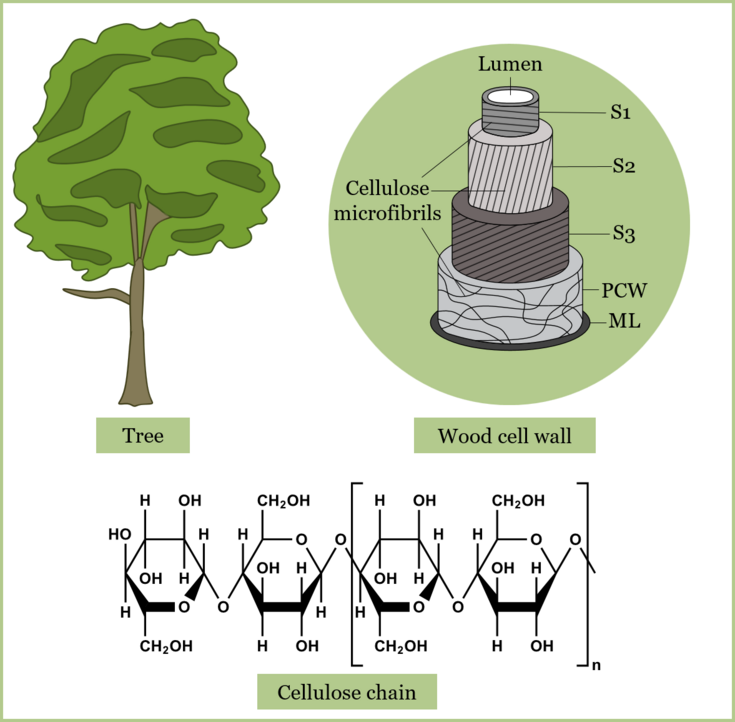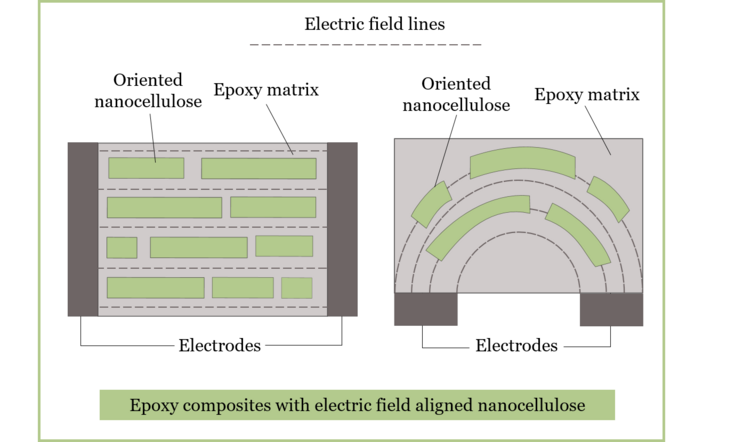Electric Field Aligned Nanocellulose for Tailored Epoxy Composites
SUPERVISOR: Helga LICHTENEGGER
PROJECT ASSIGNED TO: Florentina STADLBAUER
The remarkable mechanical properties of wood arise from its composition and its structural hierarchy. First of all, wood is a natural fiber composite in which cellulose fibrils are embedded in a hemicellulose/ lignin matrix. Furthermore, the hierarchical structuring and alignment of cellulose across multiple length scales play a central role in its mechanical performance. This hierarchy spans from molecular cellulose chains, which assemble into elementary fibrils and microfibrils, to the architecture of the wood cell wall and the macroscopic arrangement of fibers.

Figure 1: Hierarchical organization of cellulose in wood. The wood cell wall consists of the middle lamella (ML), the primary cell wall (PCW) and three layers of secondary cell wall (S1-S3). The cellulose microfibrils show different orientations in each layer.
Inspired from the natural hierarchical structure and alignment of cellulose in wood, we investigate the potential of aligned nanocellulose in epoxy composites. Epoxy resins are prepolymers that contain epoxide groups. Through a curing process, these prepolymers undergo crosslinking to form three-dimensional networks, resulting in thermoset polymers called epoxy. Epoxy is a suitable matrix material for high-performance composites. We aim to induce ordered nanocellulose structures, which is achieved by the application of an external AC field. Due to its polarizability, nanocellulose can be aligned under an electric field.

Figure 2: Induced orientation of nanocellulose in epoxy composites depending on the electrode alignment.
This PhD project is part of the Cluster of Excellence Circular Bioengineering.
